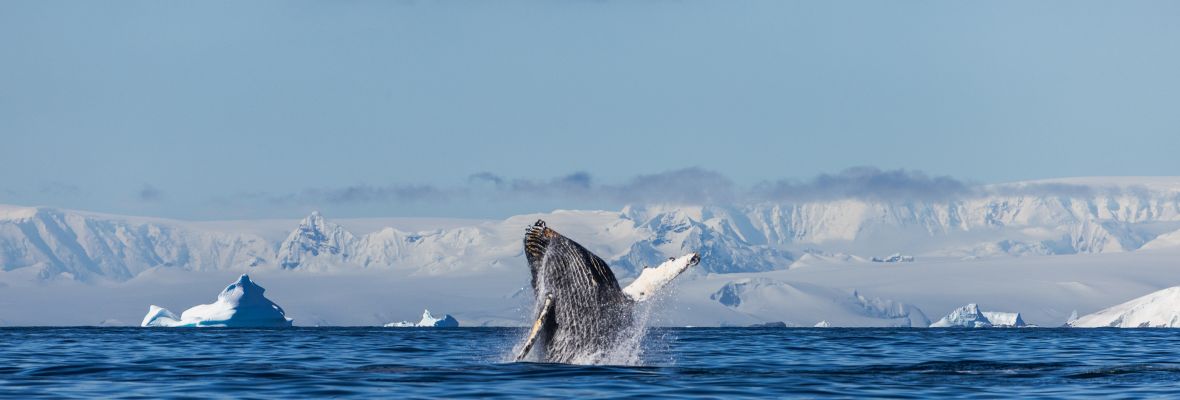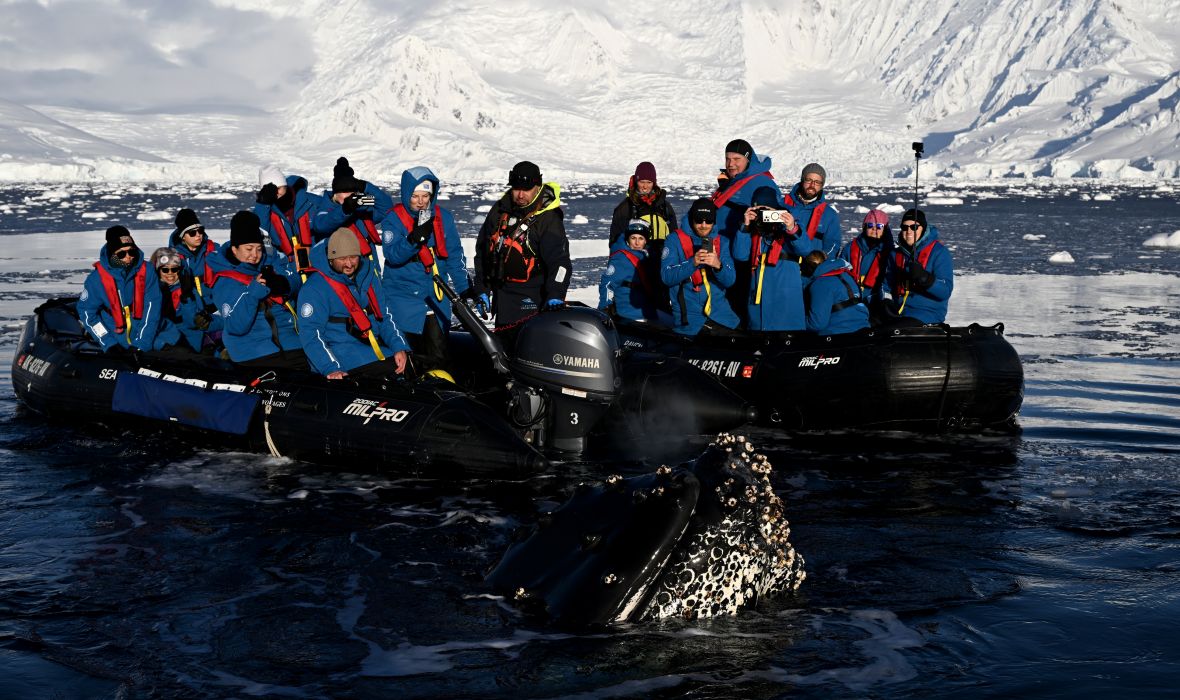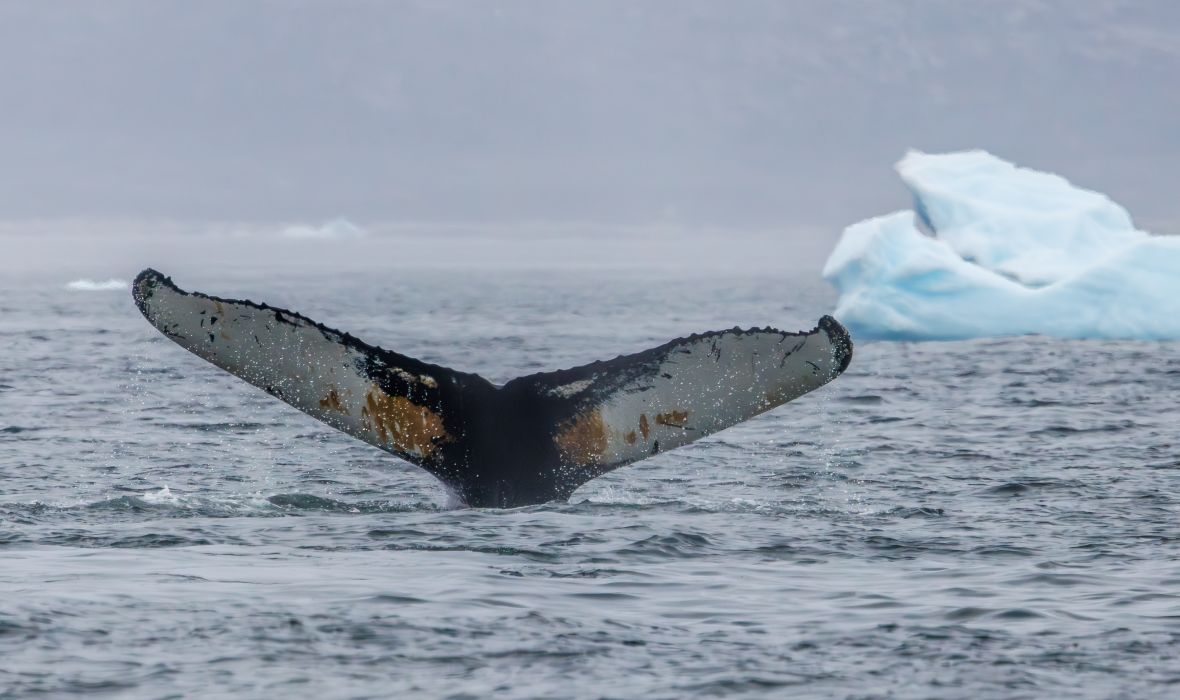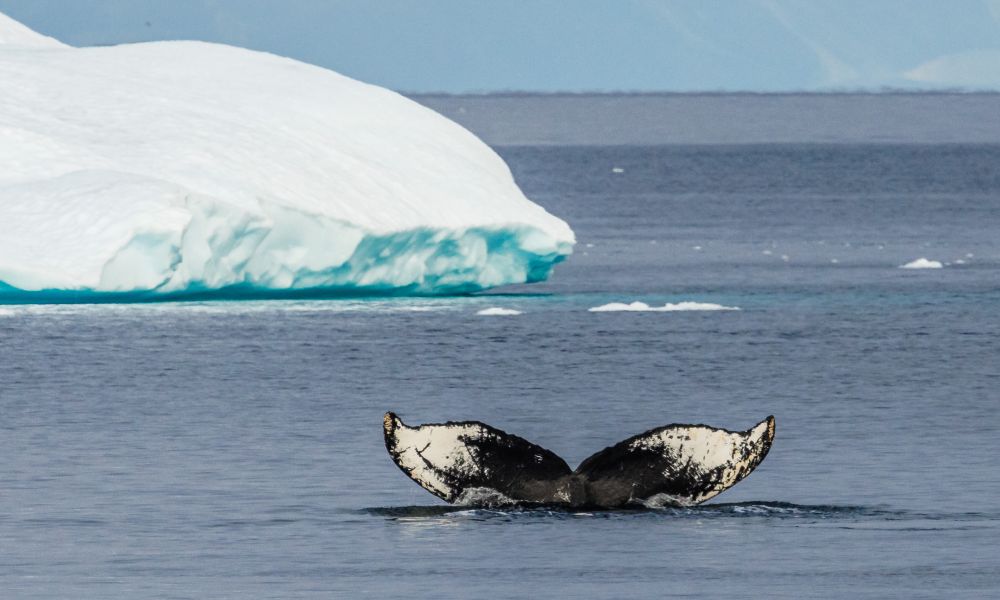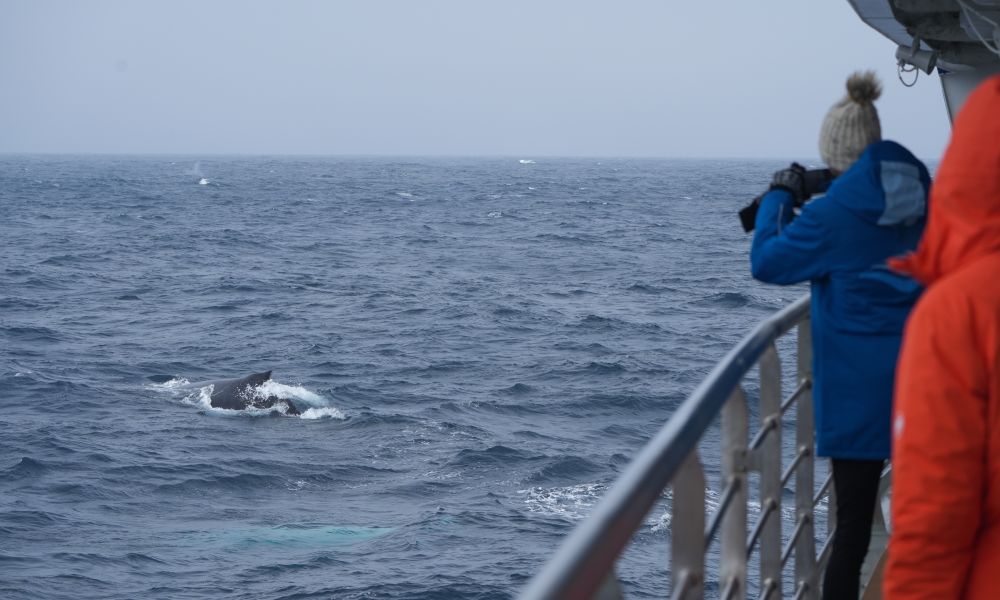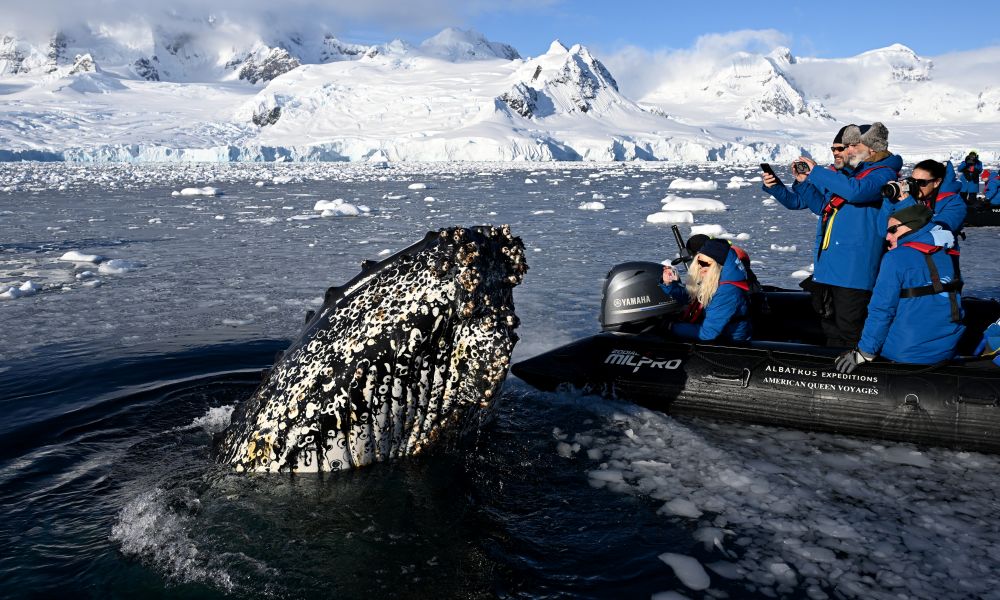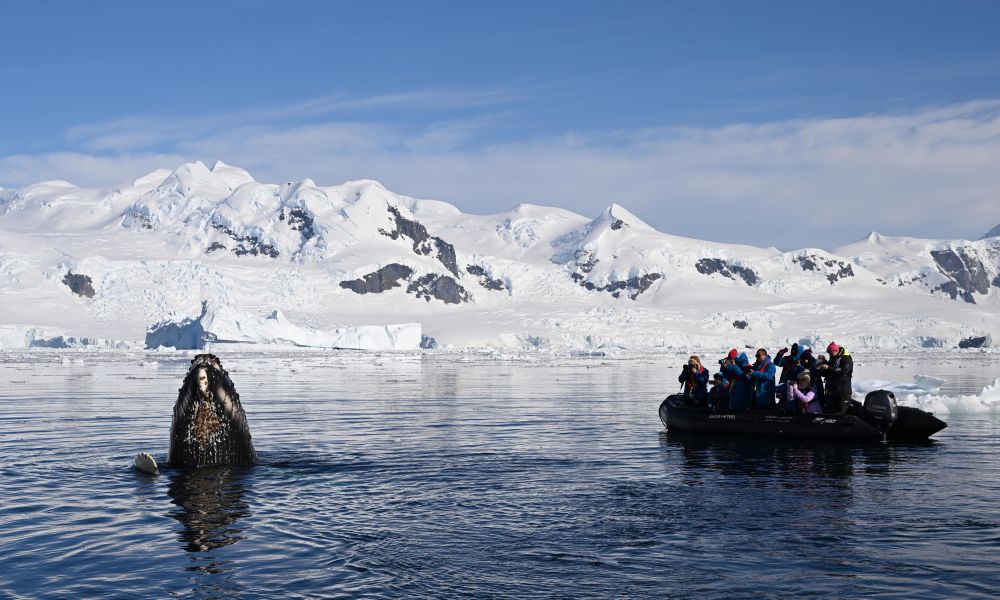How big is a humpback whale?
They are among the largest marine mammals. Adult typically measure 10 to 16 meters (35-50 feet) in length. Baby humpback whales are also impressive in size, measuring about 4 to 5 meters (13-16 feet) at birth.
What does a humpback whale sound like?
This marine mammals are renowned for their haunting and complex songs. They produce sounds lasting up to 20 minutes and often repeat them for hours. Males primarily sing during the breeding season, and their songs can travel great distances underwater, including high-frequency clicks that reach up to 30,000 Hz.
Where does the humpback whale live?
The baleen whale isfound in all major oceans, but they are most commonly seen migrating to polar regions, such as Antarctica and the Arctic. The cold polar waters provide ideal feeding conditions, as they contain higher levels of dissolved oxygen, support rich marine life, and have fewer predators and minimal human interference. Thus, they are perfect habitats for these creatures.
How is the humpback whale migration?
This ocean giant follows a seasonal migration pattern, travelling between polar feeding grounds and warmer tropical breeding grounds. In the summer, they are found in the polar regions (Arctic summer: June–September; Antarctic summer: December–March), feeding themselves intensively on plankton, krill, and small fish to build up fat reserves. As winter approaches, they migrate to tropical waters, where they mate and give birth, relying on their stored energy until they return to the feeding grounds.
What does a humpback whale eat?
The humpback whale diet consists mainly of crustaceans (krills) and small fishes. They use a cooperative feeding technique called bubble-net feeding, where they work together to create bubbles that herd prey into a concentrated area, allowing them to engulf the prey with their massive mouths.
How fast can a humpback whale swim?
This majestic cetacean typically swims 5-15 km/h (3-9 mph). However, they can reach bursts of up to 25 km/h (15 mph) when necessary, such as avoiding predators or during migration.
How long can a humpback whale hold its breath?
These marine mammals are excellent divers, capable of holding their breath for up to 30 minutes. However, they typically surface every 5-10 minutes. This ability allows them to dive to depths of around 200 meters (656 feet) in search of food.
How long does a humpback whale live?
They have an average lifespan of 80-90 years. Predation, environmental changes, and human activity influence their longevity.
What color is a humpback whale?
This cetacean is primarily black or dark grey, with white markings on its underbelly and tail.



